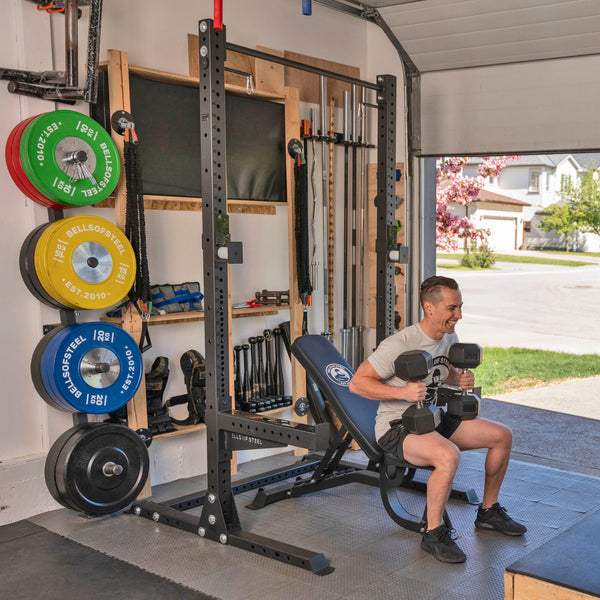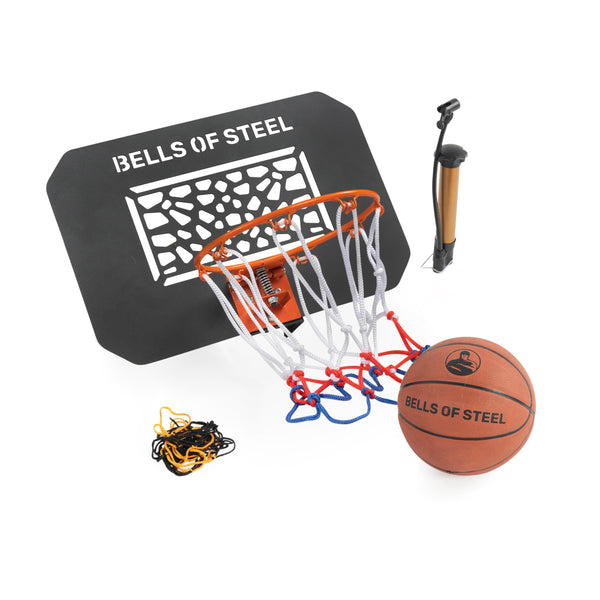So, you’ve decided to ditch the commercial gym and embrace the home gym life. No more waiting for machines, no more gym bros grunting over your squat rack, and no more monthly fees draining your wallet. Sounds like paradise, right?
But hold up! Before you get too comfortable in your new personal training space, you need to make sure you transition smoothly. This isn't just about buying a few dumbbells and calling it a day—there's a little more to it. But don't worry, we've got your back.
Here’s a step-by-step guide on how to make the shift from gym membership to gym setup without missing a beat.
1. Rework Your Workout Schedule
Get Ready to Be Your Own Boss
At a commercial gym, you probably had a schedule that involved planning around peak hours, waiting for equipment, or following a trainer’s routine. At home, you have complete freedom—but that can also lead to procrastination. Without a gym’s structure, it’s easy to fall off track.
How to Make It Work:
-
Set specific workout times: Treat your home gym like a real gym appointment. Set a consistent time for your workouts to keep a routine and avoid turning "I'll work out later" into "I’ll work out tomorrow."
-
Plan for flexibility: One of the perks of a home gym is flexibility, but don’t let it make you lazy. If something comes up, shift your workout, but don’t skip it altogether.
-
Create a calendar or schedule: Use an app, Google Calendar, or even a good ol' sticky note on the fridge to track your workouts. You’ll be way more committed when you see your goals laid out.
2. Build the Right Home Gym Setup
It’s Time to Choose Your Equipment Wisely
You might think you need every piece of equipment under the sun to make your home gym as glorious as the one at your old commercial gym, but let’s be real: you don't need a full weight room. Focus on versatile, space-efficient gear that will help you get the most bang for your buck.
Must-Have Gear for the Ultimate Home Gym:
-
Power Rack/Squat Rack: You’ll need a sturdy rack for squats, bench presses, pull-ups, and more. Look for one with safety arms or spotter arms, so you're not trying to bench press without a backup plan (trust us, no one wants to be pinned by the barbell).
-
Adjustable Dumbbells: Save space and money with adjustable dumbbells. They give you multiple weight options without cluttering your home with random dumbbells.
-
Barbell and Plates: A solid barbell and weight plates will cover almost all of your needs. Choose one that has a high weight capacity and a good grip to avoid those cringe-worthy slipping accidents.
-
Cardio Options: If you’re used to the treadmill or elliptical, consider a piece of cardio equipment that fits your space, like a treadmill that folds up, a rower, or a stationary bike. Bonus points if it doubles as a place to throw some kettlebell swings. Keep in mind that bodyweight cardio and conditioning is always an option while you work on your space. Jump those jacks. Climb those mountains. Cry, privately, in the shower.
- Flooring: Protect your floors (and your sanity) with gym mats or rubber flooring. The last thing you want is to crack your floor tiles or have your weights bounce off.
👉 Take the quiz to see which power rack is right for you
3. Create a Motivating Environment
Make Your Home Gym Feel Like a Sanctuary, Not a Storage Unit
The hardest part of training at home isn’t the weights—it’s keeping your motivation up when you’re alone with nothing but your thoughts and the hum of your fan. Let’s be honest: no one’s gonna cheer you on while you’re crushing a set of deadlifts in the living room.
How to Create the Right Atmosphere:
-
Set the mood with music: Get a killer playlist going, and make sure it’s pumping you up. Music is a huge motivator—don’t leave it to chance.
-
Add personal touches: Decorate with inspiring posters, motivational quotes, or photos of your dream physique. It's your gym; make it yours.
-
Get good lighting: No one wants to lift in a dimly lit dungeon. Make sure your home gym is well-lit, so you can actually see yourself getting stronger.
-
Embrace the space: Make sure your workout area is clear of distractions. If your living room becomes a multi-purpose space, you’ll find yourself putting off workouts more often than you like.
4. Find Your Motivation at Home
Stop Relying on the Gym’s Energy
Without gym buddies or trainers watching you, staying motivated can be tricky. But hey, you’ve got a few tricks up your sleeve to make sure you keep that fire burning.
How to Stay Fired Up:
-
Track your progress: Nothing beats seeing your hard work pay off. Keep a log of your lifts, times, or distances—whatever makes sense for your goals. Watch those numbers go up!
-
Set short-term and long-term goals: Write down your big picture goals (hello, new PR!) and break them into bite-sized chunks. When you smash a goal, celebrate it. Maybe even reward yourself with a new piece of equipment.
-
Use fitness apps or online communities: Find a community of like-minded lifters to hold you accountable. Whether it’s a Facebook group, a fitness app with built-in challenges, or Instagram, stay connected to avoid slipping into isolation.
5. Make Sure You’re Still Getting the Social Aspect
The Social Aspect of Training Matters More Than You Think
Commercial gyms offer the chance to chat with other lifters, ask for tips, or even just make small talk during rest periods. At home, you might feel like the only person on Earth who’s lifting that day. Don’t let that loneliness get to you.
How to Stay Socially Connected:
-
Join fitness challenges: Participate in online fitness challenges or virtual competitions. Competing against others (even virtually) can help keep the energy high.
-
Find a workout buddy (remotely): You don’t need to train together in person. Find someone who shares your goals, and check in with them regularly. Hold each other accountable.
- Share your journey: Use social media to post your workouts, share your progress, and connect with others. You'll be surprised how motivating it is to have a digital cheer squad.
If all else fails, you can always call Kaevon to chat: Here’s his personal number… just kidding!
FAQs About Transitioning to a Home Gym
Q: How do I avoid distractions while training at home?
A: Set clear boundaries! Create a designated workout space that isn’t filled with laundry, dishes, or the TV remote. If you can, close the door, put on your headphones, and block out the rest of the world for a while. It’s your time to train, not to scroll through TikTok.
Q: Can I build muscle with just home gym equipment?
A: Absolutely! You don’t need a commercial gym to build muscle. A power rack, barbell, and adjustable dumbbells are all you need to make serious gains. Just make sure you’re hitting your muscles from different angles and progressing consistently.
Q: How do I keep up the motivation to train solo?
A: Motivation is a tricky beast, but it can be tamed. Track your progress, set goals, and engage with online communities. When you see yourself getting stronger, it’ll light a fire to keep going.
Conclusion: Time to Make Your Home Gym Dreams a Reality!
Transitioning from a commercial gym to a home gym is all about creating a space where you feel comfortable, motivated, and ready to crush your fitness goals. With the right gear, a solid schedule, and a motivating environment, you can make this new chapter your best one yet. Remember, it’s not just about lifting weights—it’s about lifting your spirit, staying consistent, and enjoying the process.
So, get that equipment dialed in, set up a plan, and make sure you’re bringing the fire every time you step into your home gym. And hey, when in doubt, just channel your inner gym legend—you know, the one who always shows up and never skips leg day.
Ready to kick your home gym into high gear? Check out Bells of Steel’s wide range of gear designed for lifters who mean business, and get everything you need to start training like a pro—right from home!



